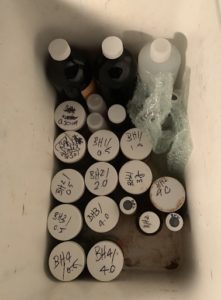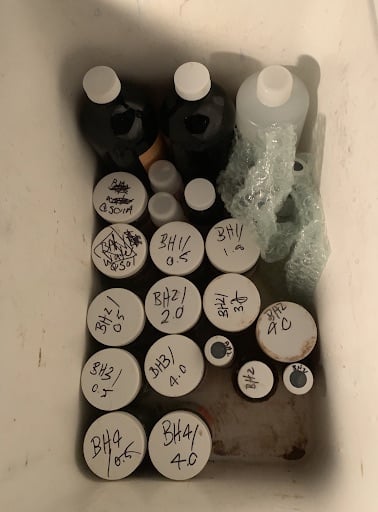Quality plans are essential in environmental sampling and analysis to protect ecosystems and ensure data integrity. Ever wondered how we ensure the air you breathe and water you drink are safe? Quality plans in environmental management are the unsung heroes, ensuring every sample tells the true story of our environment. This blog post explores their crucial role in maintaining scientific accuracy and reliability, setting the foundation for environmental policies and sustainability efforts. From the precision in sample collection to the detail in analysis, dive into how quality plans are the linchpin in our quest for a greener future.
Quality Assurance Project Plan (QAPP)
A Quality Assurance Project Plan (QAPP) is vital in ensuring the integrity of environmental sampling and analysis. It outlines the procedures and methods to be used, guaranteeing that the data collected is reliable and accurate. The QAPP serves as a guideline for field blanks, sample collection, and QA QC processes, ensuring consistency and reliability across all phases of the project.
- Detailed Procedures for Sample Collection
The QAPP must include detailed procedures for sample collection, ensuring that every step, from field blanks to the actual collection of environmental samples, is conducted systematically. This includes specifying the methods for water sampling, ensuring that samples are representative of the site conditions.
- Cross Contamination Prevention Strategies
One of the critical components of a QAPP is outlining strategies to avoid cross-contamination. This includes protocols for handling and storing samples, ensuring that the integrity of sediment samples, water samples, and other collected materials is maintained.
- Quality Assurance and Quality Control (QA/QC) Measures
The QAPP should detail the QA/QC measures to be implemented. These measures are essential for validating the data quality. It encompasses everything from the calibration of equipment to the validation of sampling techniques.
- Spatial and Temporal Considerations in Sampling
The plan should address the spatial and temporal aspects of the sampling designs. It’s vital to consider the timing and location of sampling to ensure that the data accurately reflects the environmental conditions of the site.
- Monitoring Program Design
A comprehensive monitoring program is an integral part of the QAPP. This includes the selection of appropriate sampling sites and the frequency of sampling to monitor changes in environmental conditions effectively.
- Data Management and Analysis
Finally, the QAPP must include strategies for data management and analysis. This involves outlining the methods for sample analysis, data recording, and interpretation, ensuring that all collected information contributes meaningfully to the project’s objectives.
Elements of a Sound Environmental Sampling and Analysis Plan
Key Elements of a Sampling and Analysis Plan (SAP)

Sample Collection and Storage Techniques
A sound SAP must detail the techniques for sample collection and storage. This includes protocols for handling collected water and soil samples, ensuring their integrity from the point of collection to analysis.
Designing Sampling Designs
The SAP should include well-thought-out sampling designs that reflect the project’s objectives. These designs should consider the spatial and temporal distribution of sampling sites to provide a comprehensive overview of the site’s environmental conditions.
Implementing Field Blanks and Control Samples
Field blanks and control samples are crucial for validating the sampling process. The SAP must include procedures for incorporating these elements into the sampling regime to assess the potential for contamination and ensure data quality.
Data Quality Objectives
Setting clear data quality objectives is essential in a SAP. These objectives guide the sampling process, ensuring that the data collected meets the project’s needs in terms of accuracy, precision, and relevance.
Selection of Sampling Techniques
The SAP should detail the specific sampling techniques to be used. This includes the methods for collecting sediment samples, water samples, and any other materials relevant to the study.
Water Quality Assessment
For projects involving water sampling, the SAP must include procedures for assessing water quality. This involves testing for various parameters to understand the water’s chemical, physical, and biological characteristics.
Quality Sampling and Analysis
Finally, the SAP should emphasize the importance of quality in both sampling and analysis. This includes using calibrated equipment, adhering to standard methodologies, and employing skilled personnel to conduct the analyses.
Benefits of Using Quality Plans in Environmental Sampling and Analysis
Implementing quality plans in environmental sampling offers numerous benefits. They ensure data quality, enabling informed decision-making.
- Enhanced Data Reliability and Accuracy – Quality plans ensure that environmental sampling and analysis are carried out with precision, leading to highly reliable and accurate data. This is crucial for making informed decisions about environmental management and remediation.
- Compliance with Regulatory Standards – Implementing quality plans helps in adhering to regulatory standards and guidelines. This compliance is essential for projects regulated by environmental protection agencies, ensuring that all legal requirements are met.
- Improved Environmental Risk Assessment – Quality plans enable a more accurate assessment of environmental risks. Through comprehensive sampling designs and rigorous analysis, potential hazards can be identified and addressed more effectively.
- Cost-Effectiveness in the Long Run – While setting up quality plans might require an initial investment, they prove to be cost-effective in the long run. By avoiding errors and re-sampling, they save time and resources, ultimately reducing the overall cost of environmental projects.
- Building Credibility and Trust – Using quality plans in environmental projects builds credibility and trust among stakeholders, including clients, regulatory bodies, and the community. It demonstrates a commitment to high standards and environmental responsibility.
- Facilitation of Decision Making – Quality plans provide a solid foundation of reliable data, which facilitates better decision-making. Whether it’s about land use planning, pollution control, or remediation strategies, decisions backed by quality data are more likely to be effective and sustainable.
- Enhanced Public and Environmental Safety – Quality plans contribute to public and environmental safety by ensuring that sampling and analysis accurately assess potential hazards. This leads to more effective strategies to mitigate risks associated with contaminated sites.
How to Develop a Quality Plan for Environmental Sampling and Analysis
Developing a quality plan involves a thorough understanding of the environmental context and the specific objectives of the sampling. It should encompass strategies for sediment samples collection, monitoring program design, and selection of appropriate sampling sites. The plan must detail the procedures for collecting water samples, their analysis, and the management of the collected data.
- Identify Objectives and Scope
Begin by clearly defining the objectives and scope of the environmental sampling project. This includes understanding what needs to be measured, why, and the desired outcomes of the analysis.
- Assess Site-Specific Conditions
Evaluate the environmental conditions of the site. Consider factors like the type of contaminants, the geography of the area, and the presence of sensitive ecosystems or populations.
- Select Appropriate Sampling Techniques
Choose sampling techniques that are best suited for the specific conditions and objectives of the project. This includes deciding on water sampling methods, sediment sampling techniques, and procedures for collecting and storing samples.
- Design a Comprehensive Sampling Strategy
Create a detailed sampling strategy that includes spatial and temporal aspects. Determine the number and location of sampling sites, the frequency of sampling, and the types of samples to be collected.
- Implement QA/QC Procedures
Develop and implement stringent quality assurance and quality control procedures. This includes using field blanks, maintaining a chain of custody for samples, and employing methods to avoid cross-contamination.
- Establish Data Quality Objectives
Set clear data quality objectives to guide the sampling and analysis process. These objectives should align with the project’s goals and regulatory requirements.
- Review and Update the Plan Regularly
Finally, review and update the quality plan regularly to ensure it remains effective and relevant. This should include incorporating new technologies, methods, and regulatory changes as necessary.
Ensuring Integrity and Accuracy through Quality Plans
At iEnvironmental Australia, our commitment to implementing these quality plans is a testament to our expertise and authority in the environmental consulting field. Our approach goes beyond mere compliance with standards; we strive to exceed them, integrating innovative solutions and the latest developments in environmental science. This commitment not only serves our clients by providing exceptional value but also contributes to advancing industry standards. By championing comprehensive quality plans, we not only ensure the success of our projects but also foster a culture of excellence and responsibility within the industry.
Our dedication to these plans also reflects our focus on providing client-centric and sustainable solutions. We understand that each project is unique, requiring tailored approaches that align with our clients’ specific needs. By delivering scientifically sound and sustainable solutions, we ensure that our clients receive the most effective and efficient responses to their environmental challenges. In summary, quality plans are indispensable in environmental sampling and analysis. They are the foundation that ensures the accuracy and reliability of data, crucial for environmental assessments and strategic decision-making. At iEnvironmental Australia, we proudly uphold these plans, underscoring our commitment to excellence, innovation, and delivering value-driven solutions to our clients.


